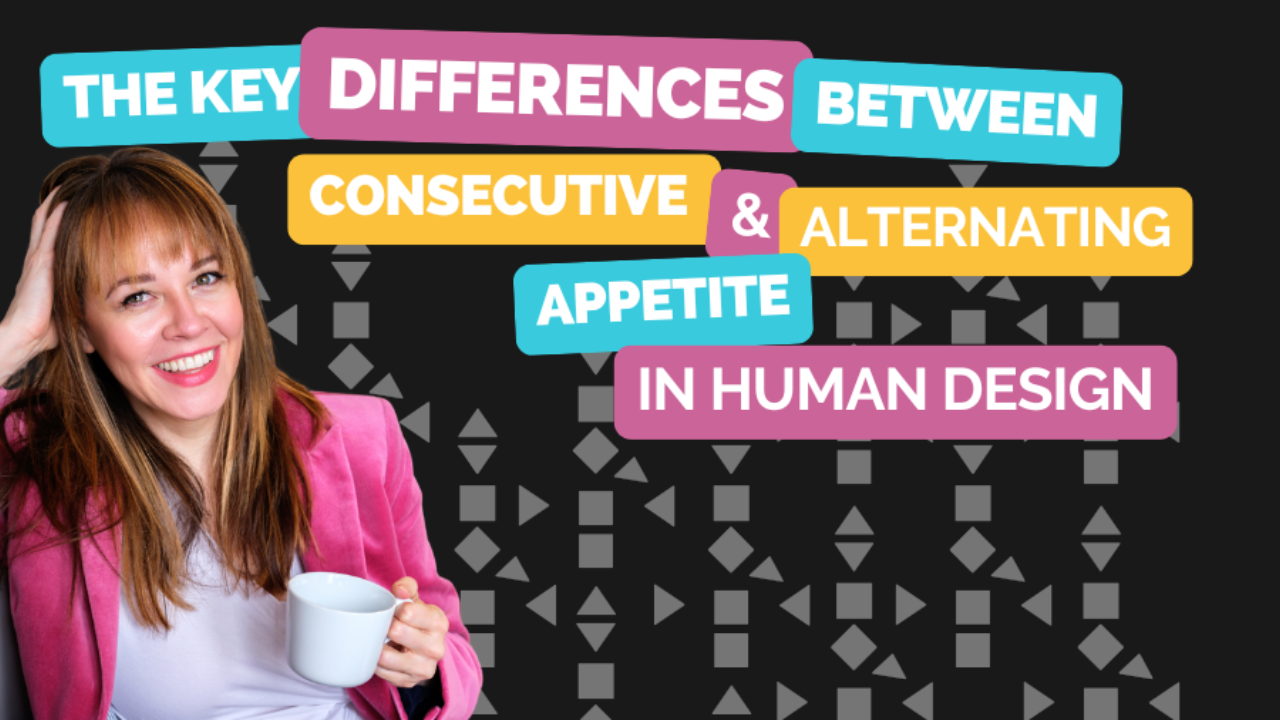
The Key Differences Between Consecutive and Alternating Appetite in Human Design
Mar 18, 2025In Human Design, Digestion arrows offer critical insights into how your body best processes nutrients and how to optimize brain function through aligned digestion. For those with the Appetite digestion type, the focus is on how you consume food, not what you eat. This digestion type is highly sensitive, making the quality of the food you consume especially important. There are two variations: Consecutive Appetite and Alternating Appetite. The direction of your digestion arrow determines which type you align with.
What is the Appetite Digestion in Human Design?
The Appetite digestion type is concerned with the manner of eating to optimize nutrient absorption and brain performance. This approach highlights the importance of eating high-quality, single-ingredient foods and how you process them. The distinction between Consecutive and Alternating Appetite lies in how you approach meals, and the types of foods your body can best digest.
Advanced Reader Tip: Appetite digestion is Color 1. Consecutive Appetite is Tones 1-3 and Alternating Appetite is Tones 4-6.
Consecutive Appetite: Structured and Sequential Eating
If your digestion arrow points left, you have Consecutive Appetite, which means your brain and body function best when consuming one food at a time in a deliberate, sequential manner. Here’s how this works:
- One Ingredient at a Time: People with Consecutive Appetite should focus on eating one single-ingredient food at a time until completion. For example, if you’re eating steak and potatoes, you would eat all of the steak first before moving on to the potatoes. This sequential approach allows for better nutrient absorption and supports your body’s natural digestive flow.
- Active Brain and Caloric Needs: Left-facing arrows represent an active brain, which burns more calories throughout the day. This means you need to eat regularly and consistently to fuel your brain and prevent mental fatigue. Missing meals or grazing can lead to decreased brain function.
- Structured, High-Quality Ingredients: It’s essential to consume high-quality, single-ingredient foods to nourish both your brain and body. Your digestion is particularly sensitive, so eating unprocessed, fresh ingredients is key to maintaining optimal health.
Alternating Appetite: Flexible and Varied Eating
If your digestion arrow points right, you have Alternating Appetite, meaning your body thrives on a more flexible, varied approach to eating. Here’s how Alternating Appetite works:
- Switching Between Single-Ingredient Foods: Alternating Appetite allows you to move between different single-ingredient foods in one sitting. Think of a charcuterie board, where you alternate between bites of cheese, meats, and fruits. This flexible, varied intake aligns with your body’s natural flow and helps balance your energy throughout the day.
- Passive Brain and Flexible Caloric Needs: Right-facing arrows are associated with a passive brain, which burns fewer calories than active brains. You can allow yourself to graze, snack, or eat when you feel hungry, without needing a strict meal structure. However, it’s important to avoid overeating in one sitting, as too many calories at once can slow down your brain function.
- High-Quality Ingredients: Like Consecutive Appetite, you also need high-quality ingredients. Your digestion is sensitive, and low-quality or processed foods can disrupt your energy and brain function. Eating clean, unprocessed, single-ingredient foods will help you maintain balance.
Understanding Active vs. Passive Engagement
The key difference between Consecutive and Alternating Appetite lies in how your brain processes energy, reflected in the active (left-facing) or passive (right-facing) nature of your design:
- Active (left-facing) digestion, like Consecutive Appetite, requires structured, one-at-a-time nourishment. Your active brain needs consistent fueling, so a steady intake of single-ingredient foods is essential for optimal brain function.
- Passive (right-facing) digestion, like Alternating Appetite, allows for flexibility and variety. You can switch between different foods in a meal and listen to your body’s hunger cues, but should avoid overeating large amounts at once to prevent sluggishness.
Which One Are You?
You can determine whether you have Consecutive or Alternating Appetite by looking at your Human Design chart. Take a look at the Digestion arrow, the top-left arrow near the head center. The direction of this arrow reveals your ideal digestion type:
- If the Digestion arrow is left-facing, you align with Consecutive Appetite. You thrive on consuming one single-ingredient food at a time, following a consistent and structured eating schedule to keep your brain and body fueled.
- If the Digestion arrow is right-facing, you align with Alternating Appetite. You prefer switching between different single-ingredient foods and enjoy the flexibility of snacking, grazing, or eating when hungry, while avoiding large meals that slow down brain function.
Understanding whether you have Consecutive or Alternating Appetite helps you align with your body’s natural digestion process and ensures that you support your brain and body with high-quality, single-ingredient foods. Whether you need a steady, structured intake or a more flexible, varied approach, aligning with your correct digestion type leads to greater energy, mental clarity, and overall well-being.
